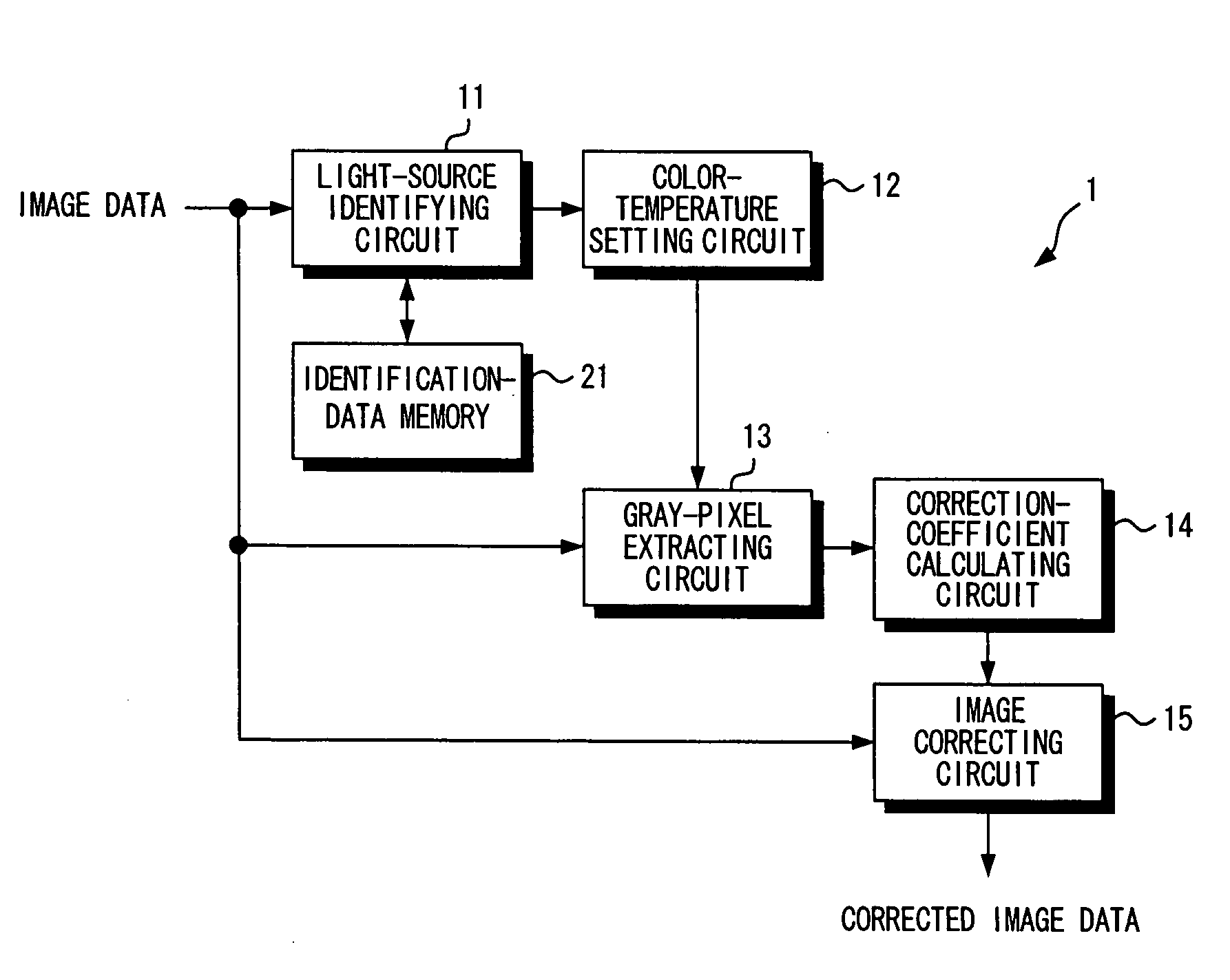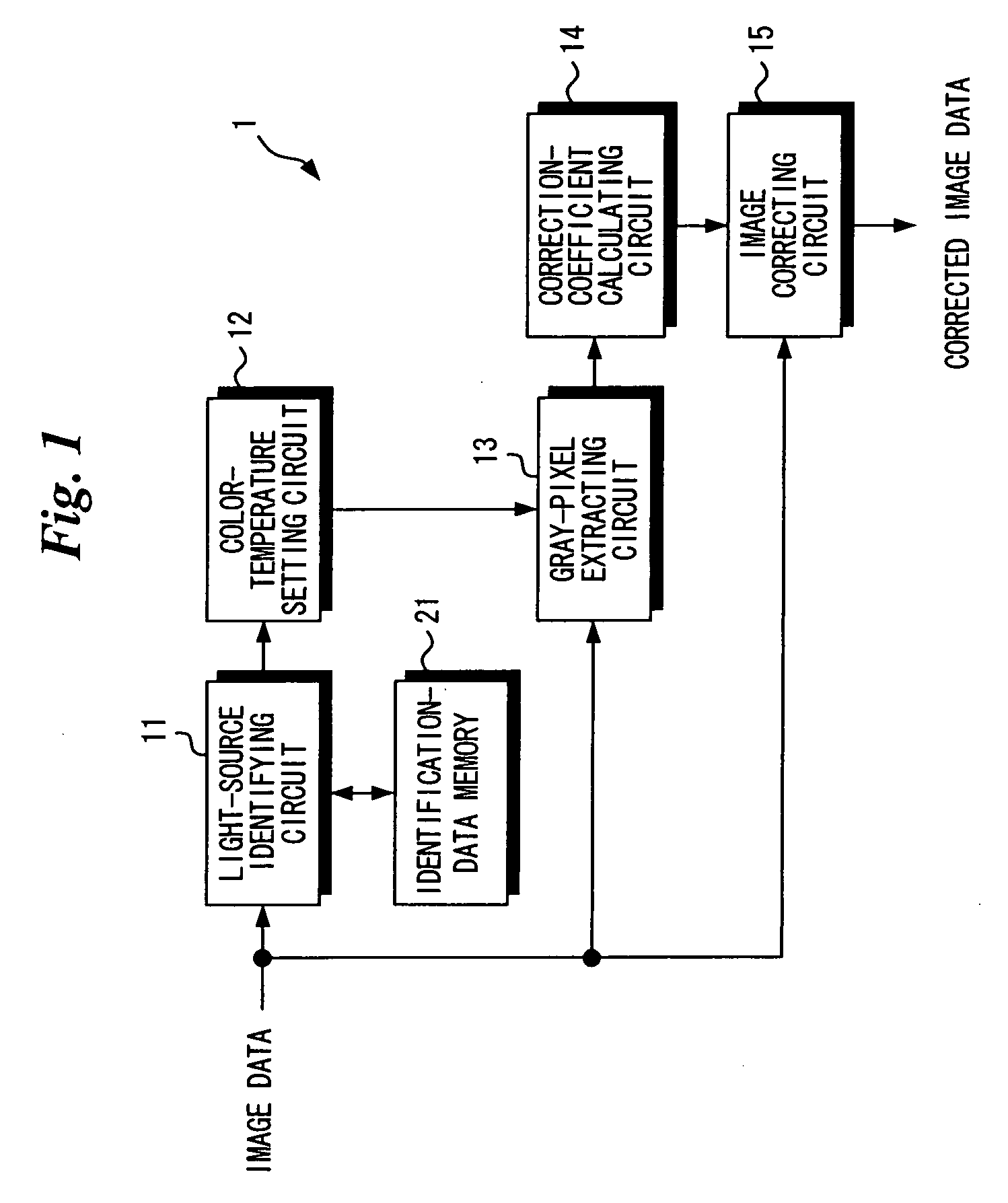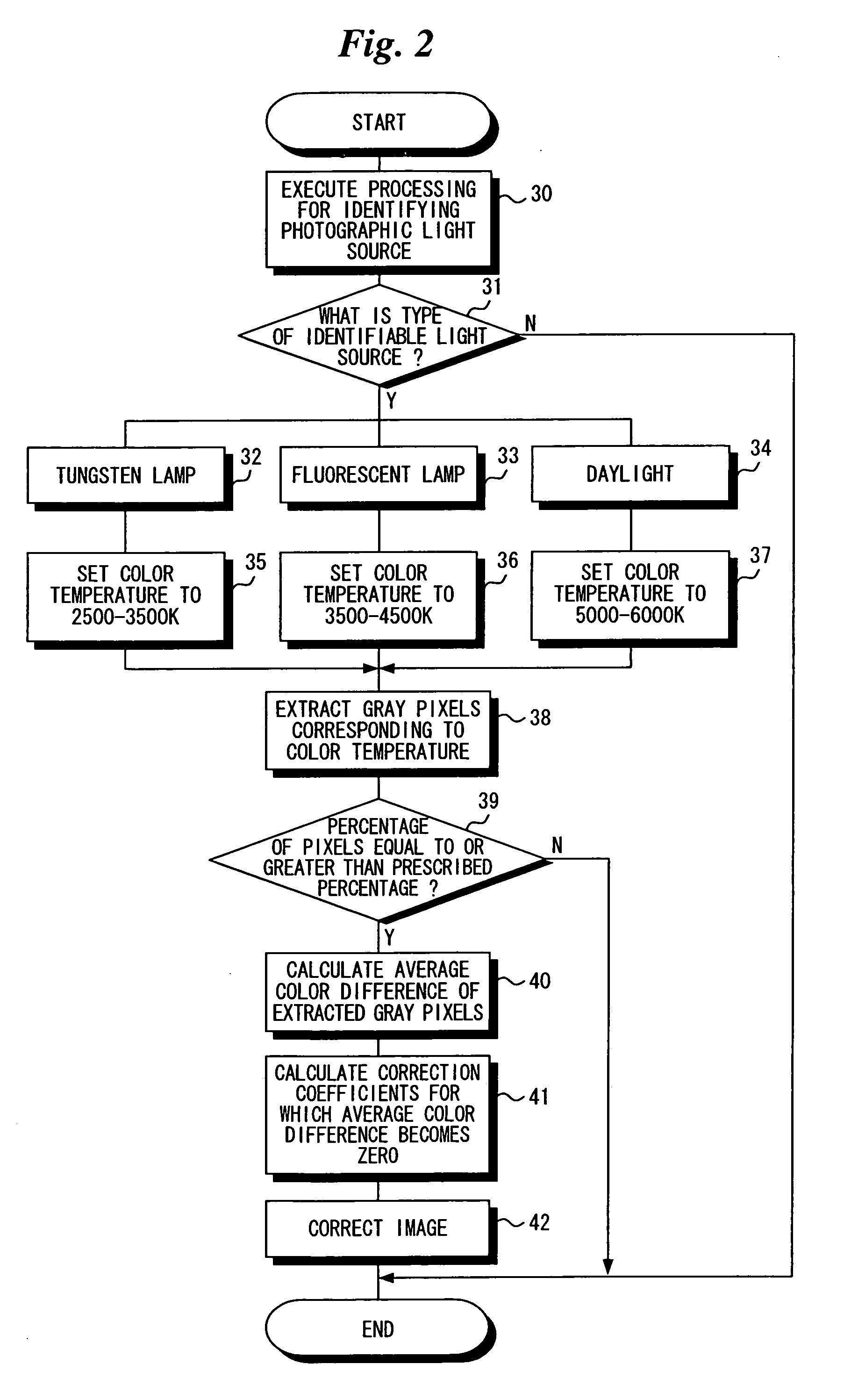Image correction apparatus, method and program
- Summary
- Abstract
- Description
- Claims
- Application Information
AI Technical Summary
Benefits of technology
Problems solved by technology
Method used
Image
Examples
Embodiment Construction
[0028] A preferred embodiment of the present invention will now be described in detail with reference to the drawings.
[0029]FIG. 1 is a block diagram illustrating the electrical structure of an image correction apparatus 1 according to the present invention, and FIG. 2 is a flowchart illustrating the flow of processing executed by the image correction apparatus.
[0030] The image correction apparatus 1 includes a light-source identifying circuit 11, a color-temperature setting circuit 12, a gray-pixel extracting circuit 13, a correction-coefficient calculating circuit 14 and an image correcting circuit 15.
[0031] Image data (an image file) that has been read from a storage device (not shown) or transmitted over a network is applied to the image correction apparatus 1. The image data (image file) is applied to the light-source identifying circuit 11, gray-pixel extracting circuit 13 and image correcting circuit 15.
[0032] The light-source identifying circuit 11 analyzes the image rep...
PUM
 Login to View More
Login to View More Abstract
Description
Claims
Application Information
 Login to View More
Login to View More - R&D
- Intellectual Property
- Life Sciences
- Materials
- Tech Scout
- Unparalleled Data Quality
- Higher Quality Content
- 60% Fewer Hallucinations
Browse by: Latest US Patents, China's latest patents, Technical Efficacy Thesaurus, Application Domain, Technology Topic, Popular Technical Reports.
© 2025 PatSnap. All rights reserved.Legal|Privacy policy|Modern Slavery Act Transparency Statement|Sitemap|About US| Contact US: help@patsnap.com



